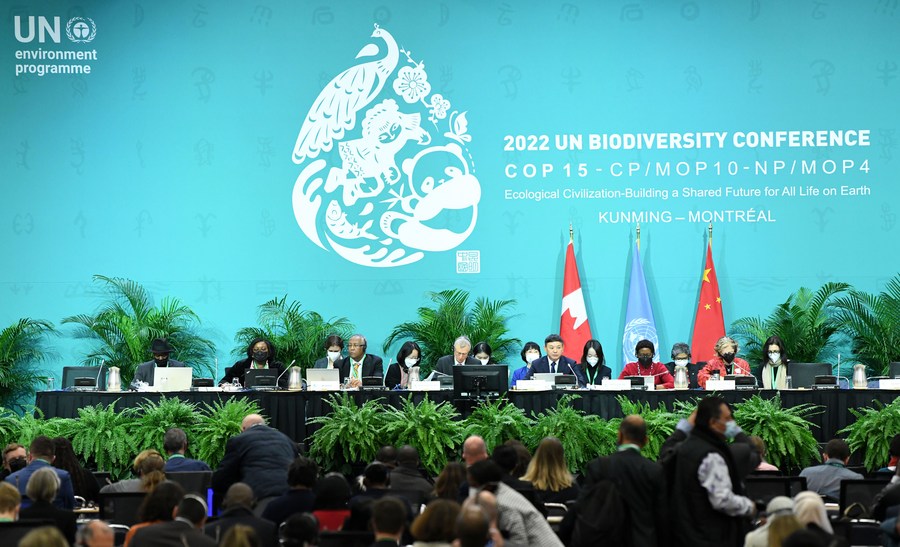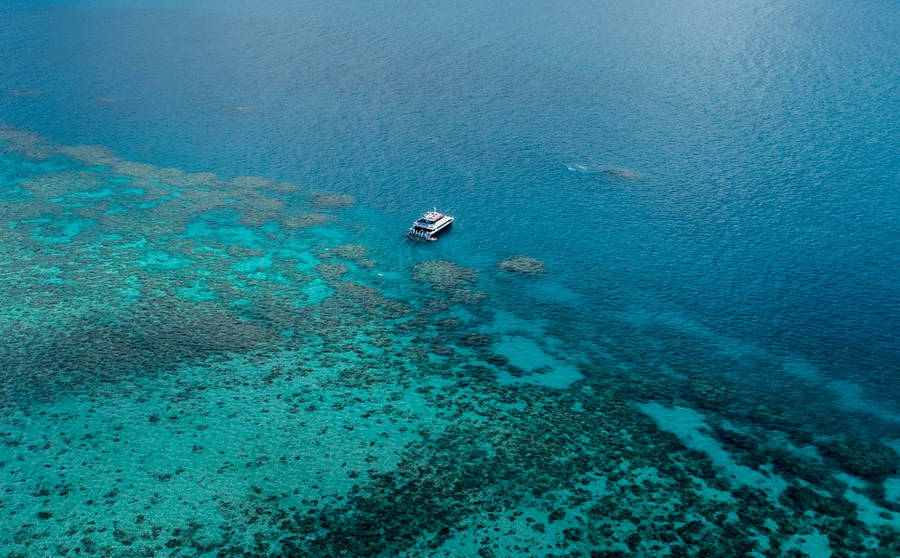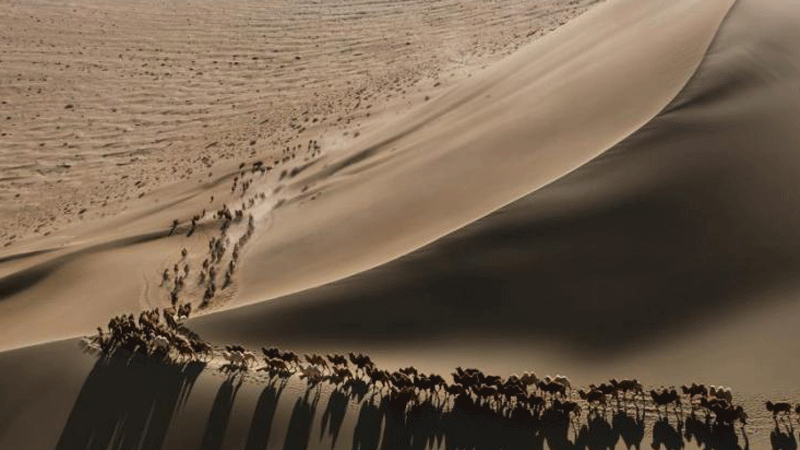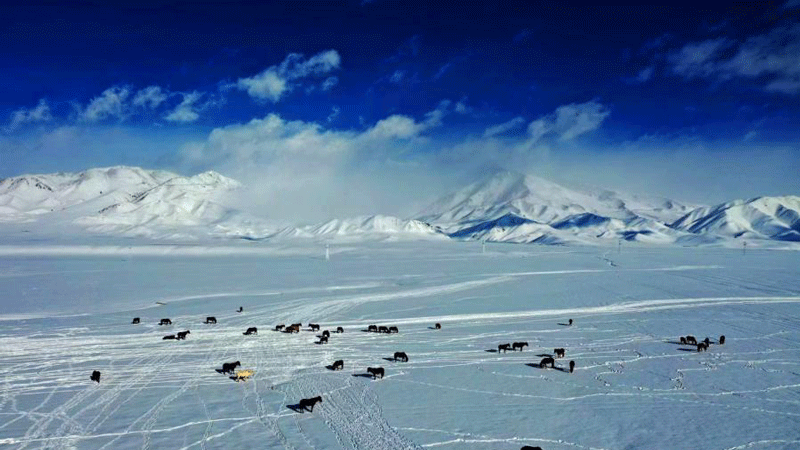Great Barrier Reef authority chair highlights opportunity provided by COP15 to halt biodiversity loss

This photo taken on Dec. 7, 2022 shows the opening ceremony of the second phase of the 15th meeting of the Conference of the Parties to the UN Convention on Biological Diversity (COP15) in Montreal, Canada. (Xinhua/Lian Yi)
The second part of COP15 is "critically important" because participants will focus on the post-2020 global biodiversity framework, a set of goals and an action plan for nature over the next decade, Great Barrier Reef Marine Park Authority Chair Ian Poiner said.
SYDNEY, Dec. 11 (Xinhua) -- The UN biodiversity conference (COP15) provides an opportunity for the world to champion nature and take a leap forward in halting biodiversity loss, Great Barrier Reef Marine Park Authority Chair Ian Poiner said.
The second part of the 15th meeting of the Conference of the Parties to the United Nations Convention on Biological Diversity, being held in Montreal, Canada on Dec. 7-19, is "critically important" because participants will focus on the post-2020 global biodiversity framework, a set of goals and an action plan for nature over the next decade, Poiner told Xinhua in a written interview.
"My hope is to see a final agreement that is ambitious enough to make a real difference in halting the decline in our natural systems, but one that is still achievable," said the chair.
For Poiner, who is also a marine scientist with a long history of involvement in Great Barrier Reef science and conservation, biodiversity is directly related to the resilience of the ecosystem itself, while humans depend on the "services" provided by ecosystems, such as freshwater, pollination, soil fertility and stability, food and medicine. He warned that ecosystems weakened by the loss of biodiversity are less likely to deliver those services, especially given the needs of an ever-growing human population.
"Healthy natural systems also provide a buffer for climate change, as they provide carbon sinks," said Poiner.
Noting that forests, wetlands and ocean habitats such as mangroves and seagrasses play a critical role in sequestering carbon dioxide from the atmosphere, Poiner stressed that conserving and restoring natural spaces, both on land and in the water, is essential for limiting carbon emissions and adapting to an already changing climate.
"Healthy ecosystems are essential and intrinsically linked to the well-being of humanity, underpinning economies, jobs and human health," said the chair.
Supporting the world's largest and most iconic coral reef ecosystem is a major responsibility for the Great Barrier Reef Marine Park Authority.

Aerial photo taken on June 2, 2021 shows the Great Barrier Reef in Queensland, Australia. (Photo by Hu Jingchen/Xinhua)
According to the authority, the Great Barrier Reef accounts for around 10 percent of the world's coral reef ecosystems, covers 344,400 square km in area, and stretches approximately 2,300 km along the coast of Queensland in northeastern Australia.
Composed of around 3,000 coral reefs, 600 continental islands, 300 coral cays and 150 inshore mangrove islands, the reef is also home to over 600 types of soft and hard corals, 100 species of jellyfish, 3,000 varieties of molluscs, 500 species of worms, 1,625 types of fish, 133 varieties of sharks and rays, and more than 30 species of whales and dolphins.
Back in 1975, the Australian government established the Great Barrier Reef Marine Park under a specific act to better protect the natural and heritage values of the reef.
After decades, Poiner said, the Great Barrier Reef Marine Park management system is globally recognized as a model for effective marine park spatial management.
"The cornerstone is a multiple-use zoning management plan that includes a network of no-take marine reserves, known as green zones, that cover approximately one-third of the Marine Park," said the chair.
He added that other management tools include legislation, plans of management, traditional owner agreements, compliance, policies, permits, stewardship and best practice, education and community awareness, research, and monitoring and reporting,
Meanwhile, the authority implements a range of activities under the Australian and Queensland governments' Reef 2050 Long-Term Sustainability Plan, an overarching framework released in 2015 for protecting and managing the Great Barrier Reef to 2050.
Poiner also briefed that the Australian government has increased new funding for reef protection to 1.2 billion Australian dollars (about 800 million U.S. dollars) through to 2030, bringing the total Australian-Queensland government investment to more than 4.2 billion Australian dollars (about 2.9 billion U.S. dollars).
The chair believed that in many countries, the only areas that support natural habitats and populations of key species are within national parks.
"It is therefore essential that we increase the global land and ocean area within national parks," Poiner said.
Photos
Related Stories
- Interview: UN biodiversity leader says COP15 vital for parties to achieve common framework as situation worsens
- COP15 launches program collecting Asian cases of "nature-based solutions"
- China makes strides in protecting biodiversity
- Plateau province makes significant strides in biodiversity conservation
- UN biodiversity talks kick off with a goal of post-2020 global action plan
- UN chief appeals for more fund from developed countries to help preserve biodiversity
Copyright © 2022 People's Daily Online. All Rights Reserved.









